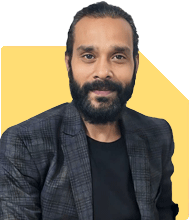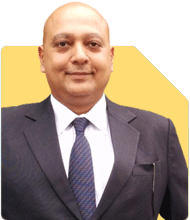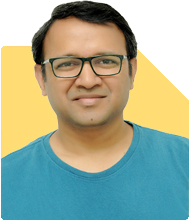40-Year-Old Considering German Masters: Private University Dilemma?
Dr Pananjay K Tiwari | Answer |Ask -Follow
Study Abroad Expert - Answered on Aug 28, 2024
They also guide PhD students who are studying internationally with their research.
Dr Pananjay has 21 years of academic and research experience and has published several books and research papers in various Indian and international journals.
He is a gold medallist with a master’s degree in science and a PhD in environmental sciences from the Hemvati Nandan Bahuguna Garhwal Central University, Uttarakhand.... more

Hi Prananjay. I have a question for you. I'm 40 years old and I have been pondering with idea of moving abroad and study masters. After doing my research, I found out that Germany would be an option worth exploring. Since it provides you 18 months of post-study work visa. My only hesitation is that I'm getting a private university which I'm not entirely comfortable with. Is it okay to go ahead with a private university? Second, I will be far more experienced than the students in my batch. Is it okay? Third, I'm willing to learn the German language and spend a little money to get a degree with best ROI and possible career in Germany. What do you think are the prospects for an applicant like me?
Regards
Dr Pananjay K Tiwari
Visit us at www.shreeoverseaseducation.com
You may like to see similar questions and answers below
Sushil Sukhwani | Answer |Ask -Follow
Study Abroad Expert - Answered on Feb 18, 2023
Patrick Dsouza |1428 Answers |Ask -Follow
CAT, XAT, CMAT, CET Expert - Answered on Mar 20, 2024
Sushil Sukhwani | Answer |Ask -Follow
Study Abroad Expert - Answered on Jun 29, 2024
Sushil Sukhwani | Answer |Ask -Follow
Study Abroad Expert - Answered on Aug 28, 2024
Dr Shyam Jamalabad |107 Answers |Ask -Follow
Dentist - Answered on Dec 05, 2025
Dr Shyam Jamalabad |107 Answers |Ask -Follow
Dentist - Answered on Dec 05, 2025
Dr Dipankar Dutta |1836 Answers |Ask -Follow
Tech Careers and Skill Development Expert - Answered on Dec 05, 2025
Ulhas Joshi |280 Answers |Ask -Follow
Mutual Fund Expert - Answered on Dec 05, 2025
Dr Dipankar Dutta |1836 Answers |Ask -Follow
Tech Careers and Skill Development Expert - Answered on Dec 04, 2025
Ravi Mittal |676 Answers |Ask -Follow
Dating, Relationships Expert - Answered on Dec 04, 2025
Anu Krishna |1745 Answers |Ask -Follow
Relationships Expert, Mind Coach - Answered on Dec 04, 2025
Anu Krishna |1745 Answers |Ask -Follow
Relationships Expert, Mind Coach - Answered on Dec 04, 2025
Mayank Chandel |2562 Answers |Ask -Follow
IIT-JEE, NEET-UG, SAT, CLAT, CA, CS Exam Expert - Answered on Dec 04, 2025
Mayank Chandel |2562 Answers |Ask -Follow
IIT-JEE, NEET-UG, SAT, CLAT, CA, CS Exam Expert - Answered on Dec 04, 2025





























